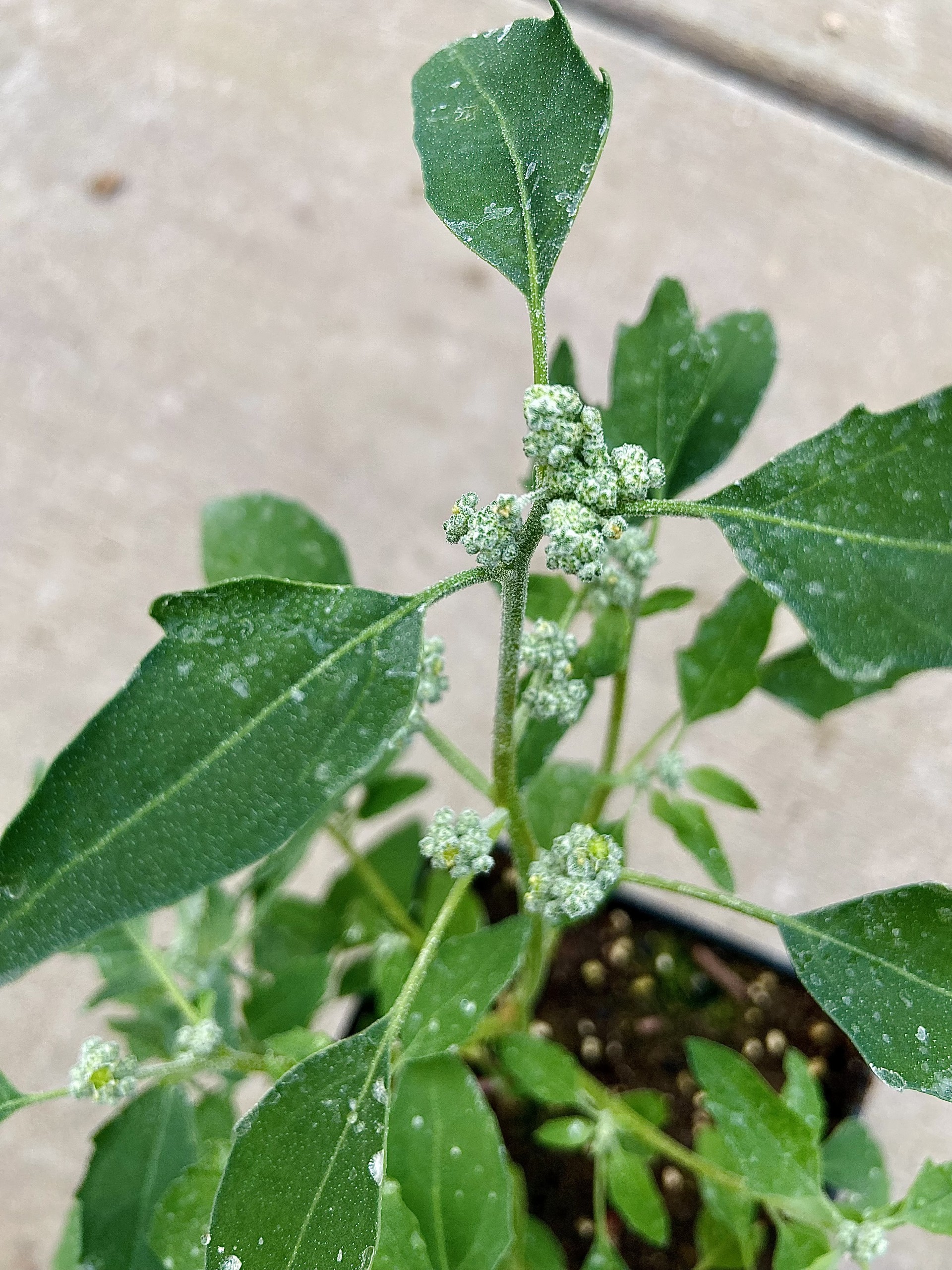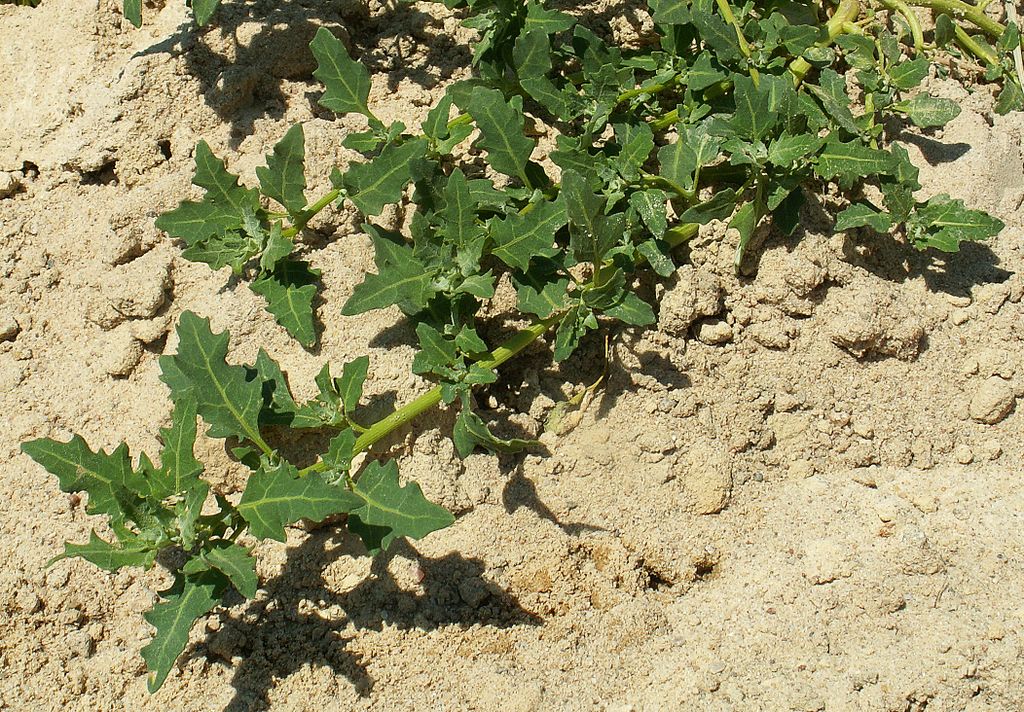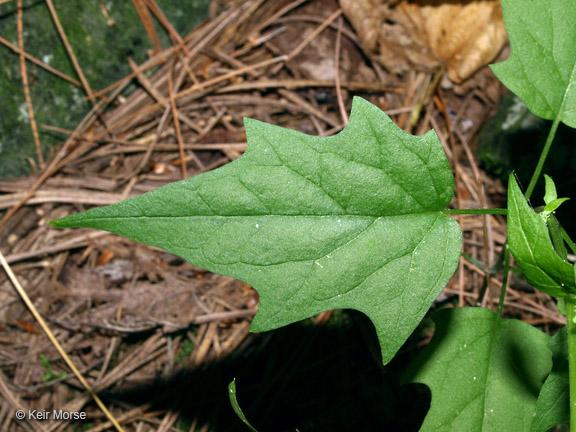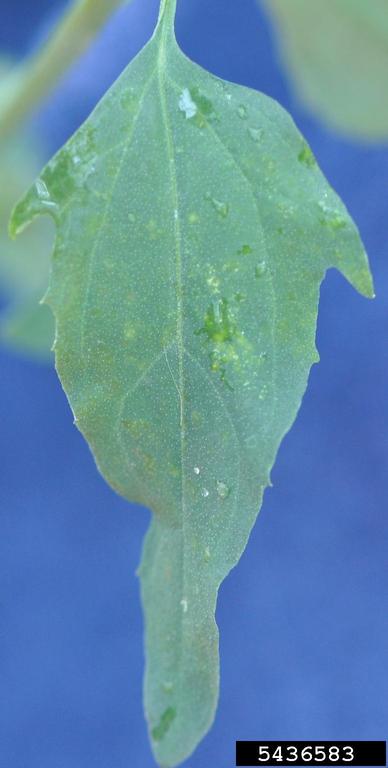Common Lambsquarters (Chenopodium album) in Christmas Tree Production- Identification (Part I)
Identifying common lambsquarters early in Christmas Tree Production can help growers develop an effective weed control plan.


Common lambsquarters (Chenopodium album L.), a member of the Amaranth family (Amaranthaceae, formerly Chenopodiaceae), is a significant weed affecting agricultural systems worldwide. This is considered as one of the most problematic perennial broad leaf weeds in Christmas tree production. This family also includes cultivated crops like spinach and beets. Originally native to Europe and Asia, common lambsquarters have now become one of the most widely distributed and troublesome weeds globally, ranking among the top five most widespread weeds (Holm et al., 1977). This weed emerges throughout the growing season, with peak emergence occurring in mid- to late spring. It thrives in well-drained soil and can begin its emergence early in the Midwest growing season. Common lambsquarters are difficult to control due to their adaptability, resistance to two groups of herbicides (Curran et al., 2021, Chandran, 2020), and tolerance to herbicides shortly after surpassing the seedling stage.
Biology of Common lambsquarters
Common lambsquarters is an upright, branching summer annual weed that grows between 1 to 6 feet tall and thrives in disturbed, fertile habitats such as barnyards, Christmas tree fields, and farmsteads. This shallow-rooted plant develops from a taproot and produces succulent stems that are grooved, smooth, or hairless, and often streaked with red, purple, or green (Chandran, 2020; Michigan State University Extension, 2015).
The cotyledons are narrow, linear, and dull green to gray, lacking a midvein, often with iridescent purple undersides. The first one or two leaf pairs are opposite, with all subsequent leaves alternating. Mature leaves are highly variable, ranging from triangular and diamond-shaped to lance-shaped (Fig 1), with light green upper surfaces and gray, mealy undersides. Young leaves often have a similar mealy coating on both surfaces, which gives the plant its characteristic whitish appearance (Michigan State University Extension, 2015).
At flowering, small, green or gray-green flowers form in dense clusters at the tips of stems and branches (Fig 2). These flowers produce seeds enclosed in a thin, papery, star-shaped covering. Common lambsquarters is a prolific seed producer, with each plant capable of producing over 70,000 seeds. These seeds can survive in the soil for over 20 years, with approximately 3% being brown and germinating readily, while the remaining black seeds are more likely to be dormant (Stevens, 1932; Williams & Harper, 1965). Most seeds remain on the plant until early winter and are dispersed through equipment transfer or livestock consumption, as they can survive passage through the digestive tract (Curran et al., 2021). Germination of common lambsquarters seeds is influenced by light, temperature fluctuations, and nitrate presence in the soil, although only 10–30% of the current season's seeds germinate the following year under favorable conditions (Mohler & DiTommaso, 2006; Forcella et al., 1997).
Propagation:
As an annual, common lambsquarters propagate exclusively through seed production. Flowering typically occurs in late summer for plants that emerge in the spring. However, plants that emerge later in the season can complete their life cycle and reach the reproductive stage in as little as six weeks (Mohler and DiTomasso, 2005). This rapid reproductive cycle allows the weed to adapt and persist in various environmental conditions. Environmental factors such as prolonged drought can trigger early maturation, enabling common lambsquarters to produce seed under stress. The plant is primarily self-pollinated, although wind can facilitate some degree of cross-pollination. Once flowering begins, seed production occurs over a relatively short period before the plant dies. This efficient seed production strategy contributes to its persistence and spread, making it a challenging weed to manage (Curran et al., 2021).
Similar Species:
Several species within the Chenopodium genus and related groups resemble common lambsquarters (Chenopodium album L.), oak-leaved goosefoot (C. glaucum), mapleleaf goosefoot (C. simplex), and spearscale (Atriplex patula also known as saltbush). As the name implies, oak-leaved goosefoot has small leaves that are lobed like those of an oak tree (Fig 3) with light colored undersides. It also has simpler, less branched flower clusters (Pennsylvania State University, College of Agriculture, Cooperative Extension Service). The maple leaf goosefoot has thin, oval leaves with pointed tips and pointed lobes along the margins (Fig 4). Flowers in this species occur in loose clusters, unlike the denser clusters of common lambsquarters. The oak-leaved goosefoot displays small, oblong leaves with irregular edges. Finally, Atriplex patula (spreading saltbush) can be distinguished by its larger cotyledons, narrow leaves, and often the older leaves small lobes which point forward at the leaf bases (Fig 5). The plant can take on a bushier appearance as well due to early branches and leaves being arranged opposite before then being alternate (Michigan State University Extension, 2015, Michigan Flora Online 2025).

.jpeg?language_id=1)


References:
Curran, B., Sprague, C., Stachler, J., & Loux, M. 2021. Biology and management of common lambsquarters (GWC-11). Purdue University Extension. https://ag.purdue.edu/btny/purdueweedscience/wp-content/uploads/2021/01/GWC11_Lambsquarters.pdf
Forcella, F., R.G. Wilson, J. Dekker, R.J. Kremer, J. Cardina, R.L. Anderson, D. Alm, K.A. Renner, R.G. Harvey, S. Clay, and D.D. Buhler. 1997. Weed seedbank emergence across the Corn Belt. Weed Sci. 45: 67-76.
Heap, I.M. 2005. International survey of herbicide resistant weeds. Online. Internet. October 31, 2005. Available http://www.weedscience.org/in.asp.
Holm, L.G. D.L. Plucknett, J.V. Pancho, and H.P. Herberger. 1977. The World’s Worst Weeds Distribution and Biology. Honolulu, HI: Univ. Press of Hawaii. Pp. 84-91.
Mohler, C.L. and A. DiTommaso. Common Lambsquarters. In Manage Weeds on Your Farm: A Guide to Ecological Strategies. In Press. Sustainable Agriculture Network, (www.sare.org/publications).
Pennsylvania State University, College of Agriculture, Cooperative Extension Service. Common lambsquarters. https://www.maine.gov/dacf/php/gotpests/weeds/factsheets/lambsquarters-penn.pdf
Stevens, O.A. 1932. The number and weight of seeds produced by weeds. Am. J. Bot. 19:784-794.
William, J.T. and J.L. Harper. 1965. Seed polymorphism and germination: the influence of nitrates and low temperatures on the germination of Chenopodium album. Weed Res. 5:141-150.



 Print
Print Email
Email

